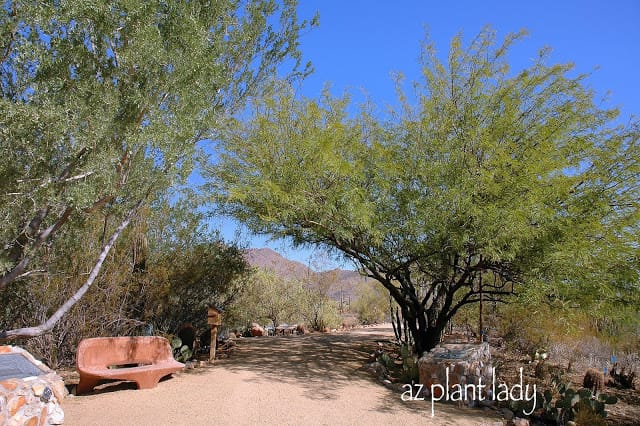
Unveiling the Mysteries of Cactus Skeletons in the Desert
When you think of a desert, you likely picture vast stretches of sand, scorching sun, and towering cacti. These iconic desert plants, such as the saguaro cactus, play a crucial role in the ecosystem and are known for their remarkable resilience in arid environments. However, have you ever wondered what lies beneath their impressive exteriors? On a recent walk through the desert, I found these skeletons. We’ll delve into the fascinating world of cactus skeletons in the desert, shedding light on the woody remains known as “ribs” that provide crucial support to these giants.
Saguaro Cactus: A Desert Sentinel
The saguaro cactus (Carnegiea gigantea) is arguably the most recognizable symbol of the American Southwest’s deserts, particularly the Sonoran Desert. These imposing cacti can reach heights of up to 60 feet and have a distinctive columnar shape, often adorned with arms that reach out like welcoming gestures to the desert’s harsh conditions.
A Closer Look at Cactus Ribs
One of the most intriguing aspects of the saguaro cactus is its internal structure. Beneath its fleshy, water-storing exterior lies a hidden framework known as “ribs.” These ribs are not bones, of course, but they serve a similar purpose in providing structural support to the cactus.
The ribs of a saguaro cactus are typically woody and arranged in a vertical pattern within the plant’s body. They extend from the base of the cactus up into the arms, acting as a skeletal framework that gives the saguaro its characteristic shape and enables it to thrive in the harsh desert environment.
Why Do Cactus Skeletons Exist?
The presence of ribs or cactus skeletons in the desert serves several essential functions:
- Structural Support: The primary role of cactus ribs is to provide structural support to the plant. This support becomes crucial as the cactus grows taller and heavier, preventing it from collapsing under its weight.
- Water Storage: While ribs are not directly involved in water storage, they indirectly facilitate it. The ribs help maintain the cactus’s shape, which, in turn, ensures the efficient storage of water in the fleshy tissue surrounding the ribs.
- Growth and Survival: Cactus skeletons play a vital role in the cactus’s ability to grow and survive in the desert. The ribs allow the saguaro to withstand strong winds and maintain its upright posture, ensuring optimal sun exposure for photosynthesis.
As I began my trek through the desert, I found beautiful specimens of cacti, plants and even some wildlife, but I also found a few skeletons as well…..
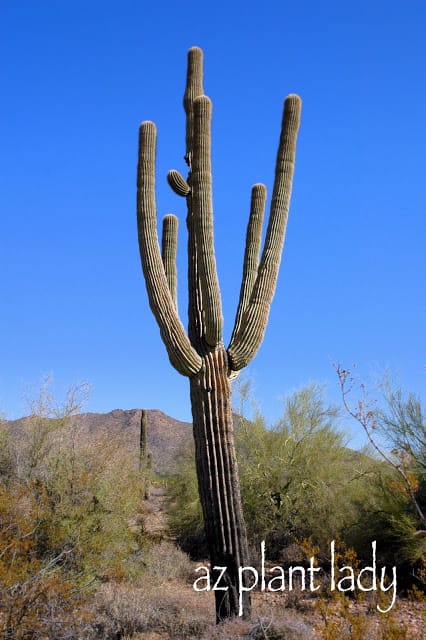
Mature Saguaro
This beautiful Saguaro was one of the first cacti that greeted me on my walk.
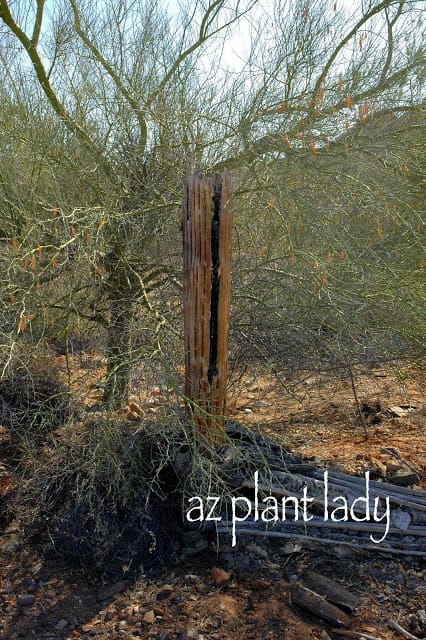
The first skeleton I came across was from a Saguaro cactus; part of it still standing upright. You can see where top part of the skeleton has fallen to the ground after the cactus plant has died.
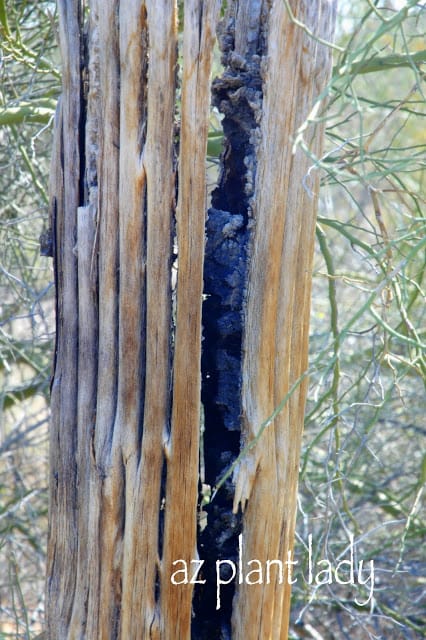
Here it is close up. The decay is till present as you can see inside. The woody remains of the saguaro are called ‘ribs’ and are what supports the Saguaro cactus.
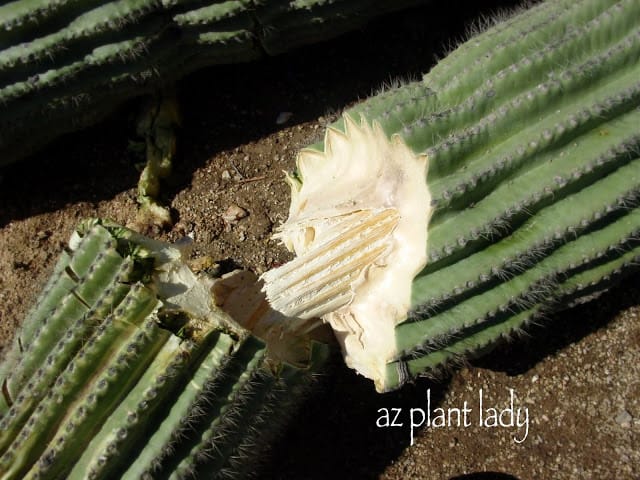
Above, is a photo of a Saguaro that had just fallen. You can easily see the ribs. Whenever a Saguaro cactus would fall in a landscape setting, we would move it to an out of the way area where it could decay. Then we would take the ribs and put them back into the landscape as a display. Saguaro ribs are considered a beautiful accent in the desert landscape and are prized by many.
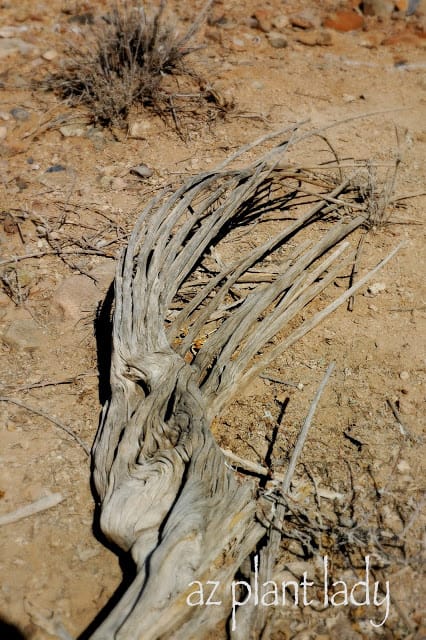
Skeletons in the Desert can be Building Material
Native Americans used Saguaro ‘ribs’ to build roofs, walls and even furniture. Another use was that they would make long poles that they used to knock off the Saguaro fruit, which is edible.
Saguaro are not the only types of cacti that leave behind skeletons….
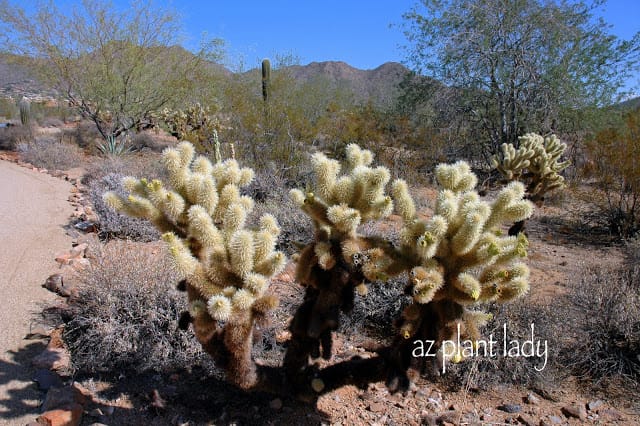
Teddy Bear Cholla (Opuntia bigelovii)
Teddy Bear Cholla (above), also has an interesting skeleton.
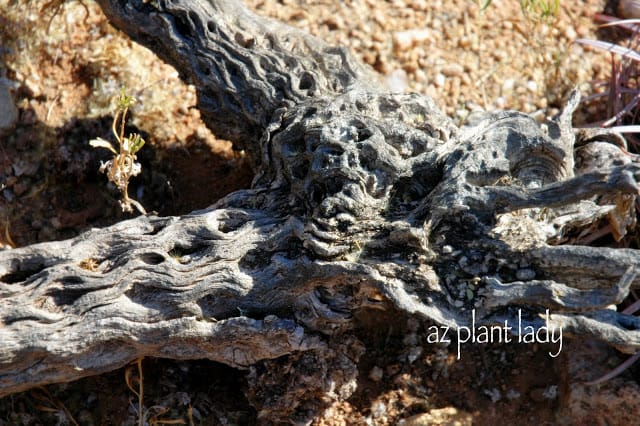
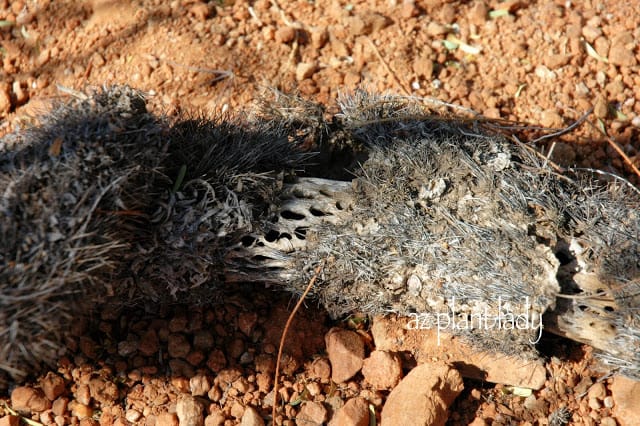
Above, is a photo of a segment of Teddy Bear Cholla that is in the process of decaying. You can see the woody skeleton starting to show.
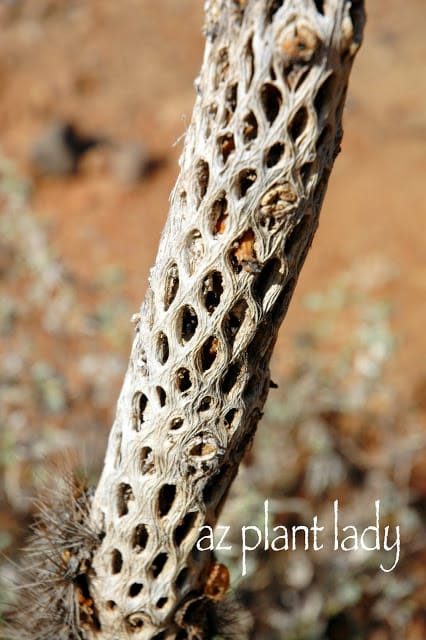
Cholla skeletons are sometimes used as walking sticks. Artisans also use cholla skeletons to make southwestern forms of art.
Cactus Ribs are the Backbone to the Desert Cactus
Cactus skeletons, or ribs, are nature’s ingenious solution to help these iconic desert plants thrive in extreme conditions. They offer support, aid in water storage, and contribute to the cactus’s overall resilience. The next time you encounter a towering saguaro cactus in the desert, take a moment to appreciate the hidden framework that enables this remarkable plant to stand tall and flourish amidst the harsh desert landscape.
Please note that it is illegal to remove Saguaro and Cholla skeletons from the desert, unless you have permission from the owner. Specimens can sometimes be purchased at certain plant nurseries that specialize in cacti.
So do as I do…..enjoy them out in the desert and take lots of photos.








